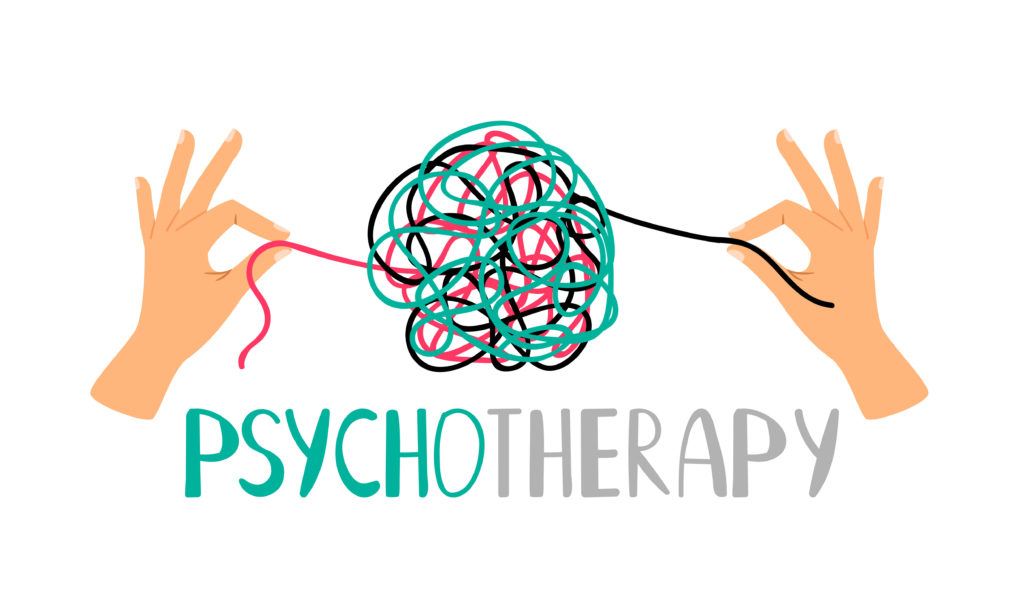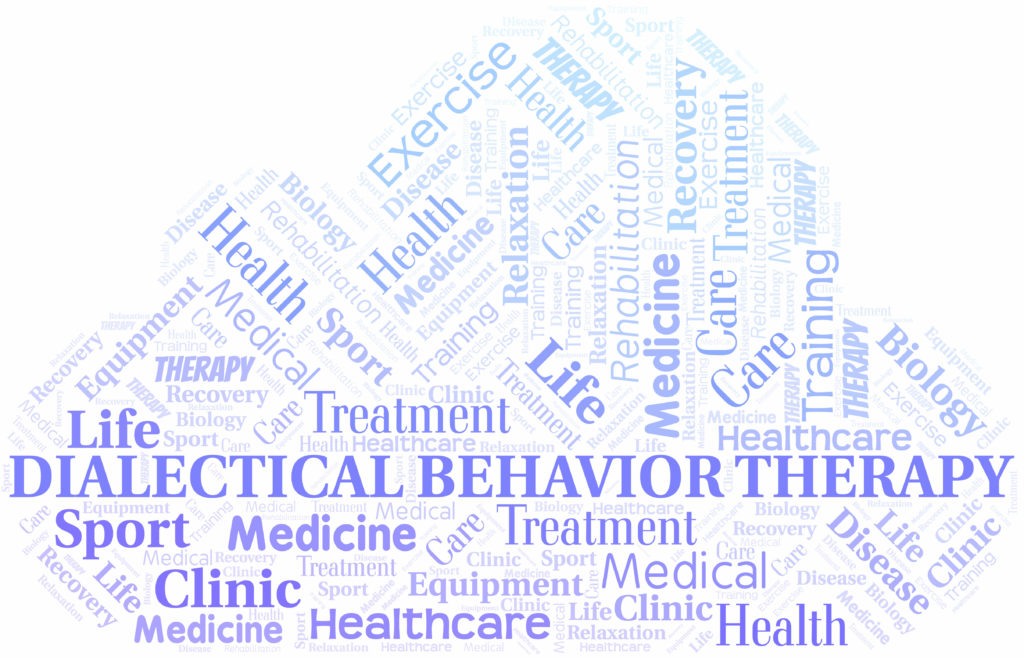Another type of cognitive behavioral therapy is known as dialectical behavior therapy or DBT. DBT was developed by Dr. Marsha Linehan and colleagues in the 1980s. When they observed that CBT alone did not produce the desired results in patients with BPD, they added techniques and developed a treatment to meet the specific needs of their patients. DBT includes a philosophical process known as dialectics.
DBT assumes that many of the problems people face are caused due to skills deficits. They fail to use effective behavior when it is required, often due to lack of knowledge about skillful behavior or when and how to use it.
The main objective of DBT is to help people develop healthy ways to cope with stress, manage their emotions and improve their relationships with others. Initially, DBT intended to treat borderline personality disorder (BPD) but was adapted to deal with other mental health conditions. People with self-destructive behaviors such as substance or eating disorders and those who have difficulty in emotional regulation can benefit with DBT.
Dialectics is based on the concept of opposites and that change happens when there is a dialogue between opposing forces. This process makes three assumptions
- that all things are interrelated,
- that change is inevitable and that
- opposites can be integrated to form a closer approximation of truth. The therapist works with the person to resolve the apparent contradiction between self-acceptance and change in order to bring about positive changes in the person.
Linehan and her team also came up with another technique known as validation. They found that patients were more willing to cooperate when they used validation along with the push for change. In this situation, the therapist validates that the patient’s actions ‘make sense’ without agreeing that it was the best approach to resolve an issue.
Dialectical vs. Cognitive-Behavioral Therapy
Today DBT has become an evidence-based approach in psychotherapy and is used to treat different types of problems. This approach is used in three different settings: individual, group and phone settings. Individual therapy involves a trained professional wherein a patient’s learned behavioral skills are adapted to their personal challenges in life. Group settings are those wherein the patients are taught behavioral skills through role playing and by completing homework assignments. Phone settings involves coaching patients through a phone and providing guidance on dealing with a challenging situation.
The therapists also meet a consultation team in DBT, to enable them to deal with the emotional demands of treating their patients. Such teams help individual therapists to navigate through challenging and complex issues related to providing therapy. Although each therapeutic setting has its own structure and goals, the characteristics of DBT can be found in group skills training, individual psychotherapy and phone coaching.
Acceptance and change helps you to learn strategies to accept and bear your life circumstances, emotions and yourself. It enables the individual to develop skills that facilitate positive changes in one’s behaviour and interactions with others.
- Behavioral therapy helps you to analyze problems or destructive patterns and replace them with more effective and healthy patterns.
- Cognitive therapy helps you to focus on changing beliefs, behavior, actions and thoughts which are not effective.
- Collaboration helps you to communicate effectively and work as a team. Skill sets enable you to learn new skills that enhance your capabilities.
- Support helps you to recognize your positive attributes, develop and use them.
DBT Strategies
Mindfulness based Cognitive therapy
DBT consists of four key strategies that show you how to effectively change your behavior. The first and foremost of these strategies is Core Mindfulness. This strategy helps you to focus on the present and enables you to ‘live in the moment.’ Mindfulness helps you to pay attention to your thoughts, feelings, sensations and impulses and use your senses, (see, touch, feel and hear) to find out what is happening around you in non-judgmental ways. It enables you to stay calm and use healthy coping skills in the midst of emotional pain. It helps you avoid getting involved in automatic negative thought patterns and impulsive behavior.
Exercise for Mindfulness (sample): Focus on your breath. Observe your inhaling and exhaling of the breath. Observe how your belly rises when you inhale and goes back when you exhale.
What Is Distress Tolerance?
Distress tolerance skills help you to accept yourself and your current situation. You will learn four techniques about how to handle a crisis.1) Distraction, 2) Improving the moment, 3) Self-soothing, and 4) Thinking of the pros and cons of not tolerating distress. Distress tolerance techniques prepare you to handle intense emotions and empower you to deal with them more positively.
Exercise (sample): Putting your body in charge. Run up and down the stairs. If you are indoors, go outdoors (outside). If you are sitting, stand up and walk around. The idea is to distract you by making your emotions follow your body.
Interpersonal effectiveness helps an individual to become more assertive in a relationship while maintaining a positive and healthy relationship. The individual is able to express his or her needs and say ‘No’ when required. The person will learn to communicate more effectively, learn to listen, respect himself and others and also be able to deal with challenging people.
Exercise (sample): Use positive communication to improve relationships. Be Gentle.
- Demonstrate good listening skills and do not interrupt others while speaking. Show Interest.
- Acknowledge the other person’s feelings and thoughts. Validate.
- Maintain an easy attitude by smiling frequently and being light-hearted. Be Easy.
- The acronym GIVE sums it up all in four simple words. Gentle, Interest, Validate, Easy.
Emotional Regulation or control over your emotions helps you to deal with powerful feelings more effectively. The skills that you learn will enable you to identify, name and change your emotions. By identifying and coping with negative emotions, such as anger, you will reduce your emotional vulnerability and move towards more positive experiences.
Exercise (sample): Opposite Action. If you are feeling depressed or sad, try to plan a visit to your family or friends. Emotional regulation skills promote stability.
Is DBT right for you?
Research on DBT indicates that this approach is more effective for individuals with borderline personality disorder such as people who have suicidal tendencies. However, this approach may also be useful in treating other mental health disorders as well.
It may well be that DBT is an effective treatment for various disorders like Bipolar disorder, Eating disorders (like binge eating, bulimia and anorexia nervosa), attention-deficit/hyperactivity disorder (ADHD), generalized anxiety disorder (GAD) and major depressive disorder (severe depression), obsessive compulsive disorder (OCD), post-traumatic stress disorder (PTSD) and substance use disorder.
If you or your loved ones are having suicidal thoughts or fear danger, call us for an appointment right away. Book an appointment at your local Simply Align Rehab – Cedarbrae Medical Centre: 3630 Lawrence Ave E, Scarborough, ON M1G1P6 or call us at # 416-438-3230 or Text 416-628-8554 or BOOK ONLINE https://simplyalignrehab.com/
DBT has also been found to be effective regardless of the person’s age, gender, sexual orientation and race. However, the best method to find out whether DBT is appropriate for you is to talk with a trained and experienced professional. Allow them to evaluate the symptoms, history and therapy goals to see that it is the best for you.
You can being your search for a good mental health professional in DBT with the Clinical Resource Directory maintained by Behavioral Tech, an organization that was founded by Dr. Linehan for training mental health professionals. Another source would be your current therapist, or your provider who might refer you to a colleague with specialization in DBT.








